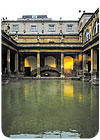
The thermal effects of warm water on the skin can result in:
- increased fabrication of stress hormones;
- improved circulation and digestion;
- stimulation of blood flow; and
- limited reaction to pain.
Cold water, on the other hand, boosts internal systems' ability to revitalize the body by alleviating inflammation.
Immersing the body in a bath or whirlpool can give the body a feeling of buoyancy, a relief from gravity, while relieving muscle tension and enhancing circulation.
The various types of bathing hydrotherapy in the modern institutional setting include:
- individual showers;
- full-body immersion baths;
- sitz baths;
- arm/leg baths, hip/extremity baths;
- foot/extremity baths; and
- contrast baths (alternating warm for 1-2 minutes, and cold for 30 seconds, partial immersion).
Spray (douche) hydrotherapy involves the use of a hose to softly spray the skin on various areas of the body, i.e., knee, thigh, lower trunk, arm, chest, upper trunk, back, neck and face.
The different types of bathing and spray hydrotherapy employ various temperatures in the course of treatment, as determined by a physician or therapist. These include the following:
- Cold water.
- Tepid water (85 to 95 degrees F).
- Neutral temperatures (92 to 95 degrees F).
- Warm temperatures (100 to 106 degrees F).
The upper temperature limits for each category are the maximum temperatures that must be used. These temperature limits should never be exceeded. Please note that the temperatures shown are approximate; a medical professional specifies the water temperature for any hydrotherapy or spray treatment.
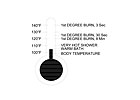
Excessive Hot Water Temperatures: Such temperatures can cause scalding, most especially for those with a limited ability to sense temperature. Bathing or spray temperatures must be closely monitored at all times, with special attention paid to the young and elderly populations.
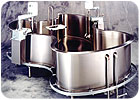
The correct application of water temperature control devices is critical for providing controlled mixed water temperatures for each type of shower, bath or spray used for hydrotherapy in the institutional environment. The hot water supply temperature in the institution must be controlled at the source, before any of the suggested hydrotherapy mixing devices are installed with the hydrotherapy showers, sprays or baths.
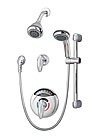
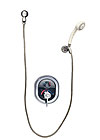
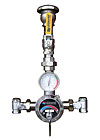

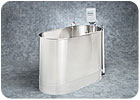
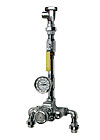
- The application for which the bathing equipment is intended. Consult the manufacturer's engineering and application information.
- The size and capacity of the hydrotherapy equipment.
- The type of water mixing valve or assembly required by the bathing unit.
- The size and flow capacity of the water mixing device. Always consult the manufacturer's engineering and application data.
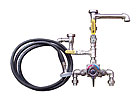
- 1. Follow the valve manufacturer's instructions regarding regular maintenance of the device.
2. Test the mixing valve's high temperature limit stop upon installation and on an ongoing basis in conjunction with the scheduled maintenance for the unit.
3. Verify the accuracy of any temperature gauges - whether installed on the bathing unit or with the mixing device - used in the hydrotherapy process as part of the maintenance process.
From the beginning of time, water has been used to heal, to hydrate and to sustain life. As we have used technology to control its thermal effects with increasing effectiveness, we can take comfort in knowing our ancestors had the right idea about water, our most precious resource.